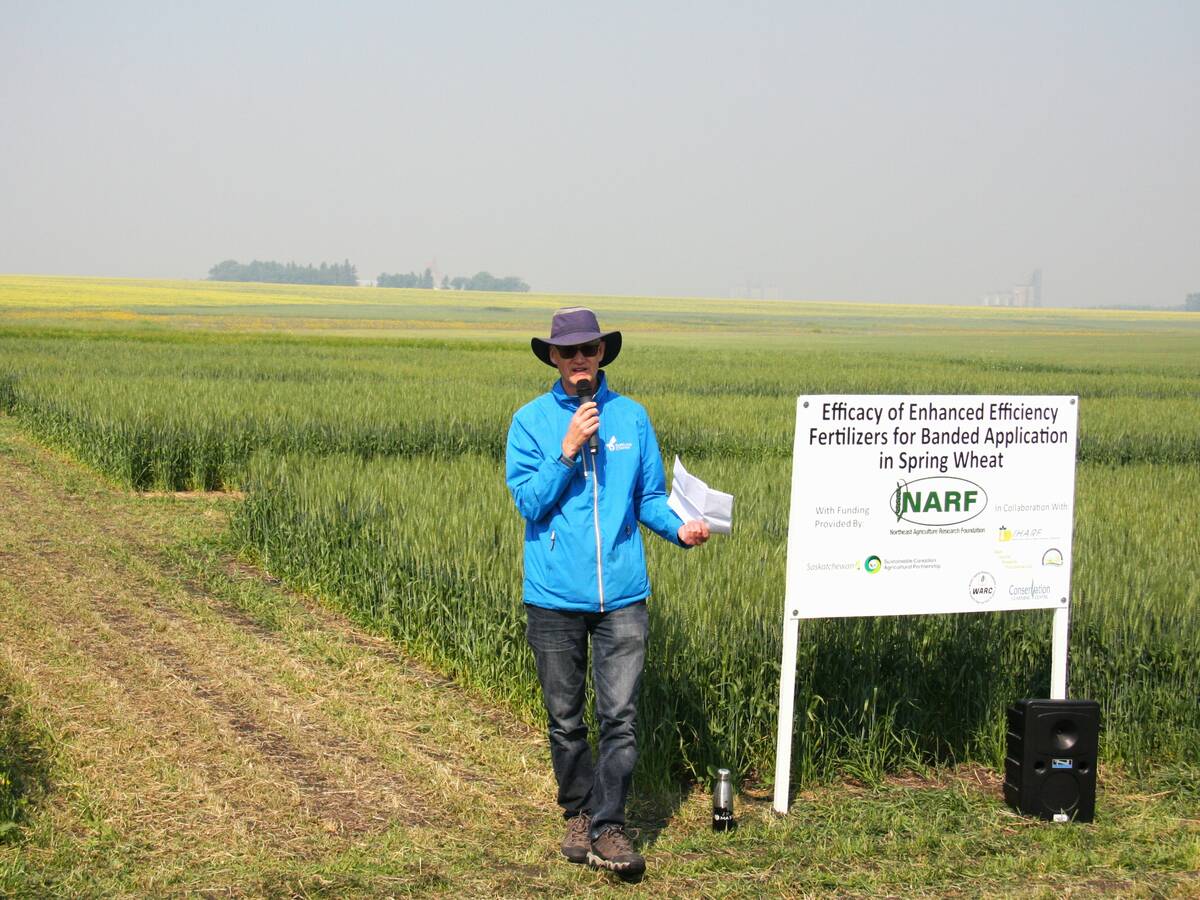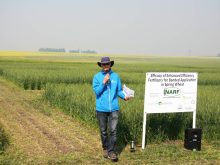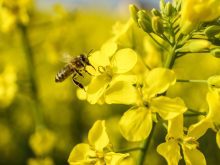A dealer network is being established in Canada to install, sell and support a spraying system that senses and sprays individual weeds on a broad-acre scale.
Andries Mellema said he holds the exclusive rights in Canada to the WEEDit system through Tramontana Agro Technologies.
“We are focused first on the market in Western Canada…,” he said.
So far, they have established dealerships near Medicine Hat and Stettler in Alberta, and Swift Current, Sask. They are also exploring the possibility of dealerships in Manitoba and Ontario.
Read Also

Fertilizer method’s link to emissions studied
A researcher says others studying greenhouse gas emissions aren’t considering how the loss of nitrogen into the atmosphere correlates with fertilizer application or if there is an impact to yield.
So far, five units have been sold in Canada, and the company is targeting sales of 10 units in 2018 and 20 the following year.
“I would like to see one major dealership able to do the installation per (prairie) province and then a number of other dealerships to support sales and service in those provinces,” Mellema said.
Mellema wants to eventually sell 20 WEEDit spraying systems per year in each of the prairie provinces.
Travis Albrecht bought the first WEEDit system in Canada for his John Deere 4720 with a 100-foot boom, and he’s now in charge of distributing the product in the Medicine Hat region.
“I’m the only guy in Canada who knows how to put them on,” Albrecht said.
“It’s an in-depth install, for sure. We’re actually just finishing installing a system on a 4940 right now, then doing two Patriots after that, then a R4045.”
He said WEEDit enabled huge chemical savings for his 12,000-acre farm last year.
“At pre-seed burn-off, we saved 40 percent of our glyphosate using it, and then in the fall, we saved 87 percent of our glyphosate on the fall burn-off,” Albrecht said.
“Basically, $80,000 in the fall is what we saved and close to $40,000 in the spring.”
Albrecht was able to use a tank-mix product to target thistles last autumn that would have been cost-prohibitive without WEEDit’s ability to target individual weeds because a blanket spray requires much more chemical per acre.
“It allowed us in the fall to spray Lontrel, to get Canada thistle, where before we wouldn’t because it’s over $20 an acre,” Albrecht said.
“Now, we can add this stuff because it’s not getting sprayed on the dirt. It’s just getting sprayed on the weeds.”
He said he was impressed with the performance of his WEEDit-equipped sprayer.
“We blanket-sprayed some in the spring right up against where the WEEDit was going, and you couldn’t’ tell the difference,” Albrecht said.
The WEEDit system has red lights on the sprayer’s booms that shine ahead of where the sprayer is travelling. The chlorophyll in the plants shifts the frequency of this light, and sensors on the boom detect the change.
The high energy LED lights illuminate weeds with a leaf diameter as small as 25 millimetres.
Each sensor monitors a one-metre section of the infrared light that is bounced off the ground ahead of the sprayer boom.
The sensor divides the one-metre length that it’s responsible for into five lanes, and each of these 20 centimetre lanes have a nozzle dedicated to spraying any of the weeds detected within the lane.
When the sensor detects a plant, it automatically activates the spray nozzle. The sensor samples the ground 40,000 times per second and allows the sprayer to spray up to 25 km-h.
Spray expert Tom Wolf witnessed the WEEDit in action at a field day last summer and he said we’ve moved past the question of whether WEEDit works, because it’s proven technology that’s being widely used in Australia.
The question now is how to best use this system in the context of Canadian agriculture.
“In Western Canada, we use a blend of modes of action in our pre-seed burn off and in some cases they’re residual. Heat is a little residual, even Express is a little residual. Frontline and PrePass are also a little residual, so we don’t know if we should be applying residuals on a very spotty basis or not,” Wolf said.
Pre-seed burnoffs are also applied early in the spring, and it’s hard to know how well the WEEDit detects and hits very tiny weeds or how it deals with weeds of the verge of emergence.
Wolf said WEEDit does have an option that can help with very small weeds.
“It allows you to spray a small continuous dose in the background. So every nozzle is pulsing at a very low duty cycle, and when a weed triggers a sensor, then that sensor comes on full blast. So, your savings are a little bit less, but then you have the assurance that either that the residual is there or that the tiniest weeds are also controlled,” Wolf said.
He said it’s safe to do the background spray at a lower dose because the weeds targeted by the background application are very small and easy to kill. The larger weeds will get the full dose.
It “will depend a bit on the herbicide mix and we will need to learn along the way and make adjustments. So, there is a place for agronomic research with this unit,” Wolf said.
Mellema said he’s interested in having independent research conducted into how to best use WEEDit on Canadian fields.
Wolf said resistance is an inevitable consequence of overuse of herbicide and that technologies like WEEDit may help the industry apply a smarter selection pressure that is more difficult for weeds to react to.
He said one of the reasons herbicide resistance is creeping up is because there are economic drivers behind chemical use patterns, and that WEEDit will make more expensive tank mixes possible for growers.
“Everyone is talking about multiple effective modes of action that’s preferred to herbicide rotation. It’s possibly slightly better, although I don’t have any data on this, other than doing sequential applications in the same season. A tank mix with multiple modes of action can get expensive. For that reason, I think it (WEEDit) will be a tool to delay herbicide resistance,” Wolf said.
The pulse width modulation of the WEEDit system enables turn compensation, which can also help delay herbicide resistance, but applying sprays at different rates along the boom, to compensate for corners, when the outside of the boom travels farther than the inside.
He said WEEDit could also help improve the public’s perception of agriculture.
“You don’t have to do any explanation to someone. If it (WEEDit) sees something that needs to be sprayed, it sprays it and if it doesn’t, it doesn’t. And that’s intuitively understandable to anybody,” Wolf said.
“I would put this on the front pages of everything if you wanted to increase the public image of agriculture.”
It costs $160,000 to install a WEEDit system on a 100-foot sprayer, which means the technology pencils in better for larger farms with large potential chemical savings per year.
However, Mellema said there are smaller WEEDit systems for trailer-style and three-point hitch style sprayers.
“We have other systems like the gliders and the tool bars, which is a three-point hitch system, whereby you do a 40 or 60 foot wide boom on a platform good for smaller farms. It’s not as expensive, a more scaled investment,” he said.
WEEDit will be on display at canolaPALOOZA this summer.


















